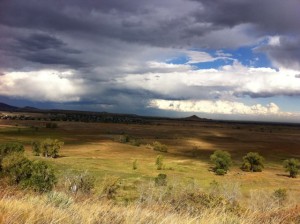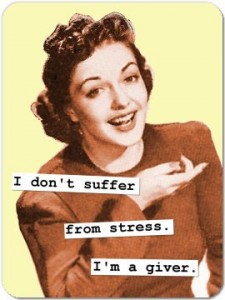Written by: Cliff English
Are you an athlete who cringes at the thought of making massages a part of your regular training habits? Coach Cliff English explains why seeking massages before your muscles seize should be an integral part of your training plan.
I definitely cannot say massage therapy is a foreign recovery modality concept to most triathletes, and even the most stalwart holdouts can be seen on occasion receiving a post-race massage or two. It seems massage is still viewed as a luxury and an indulgence and is used very infrequently. Most will still wait until every muscle has seized up and muscles and tendons are about as tight as the weave of carbon on your carbon-fiber bike.
Sure, if you wait until that point, you will garner some brief relief from your ailments. However, for an athlete at any level, the real benefits arise from frequent massage therapy and from working with a massage therapist that understands sports massage and your body. I believe that if you are serious about your sport and performance, it is essential to integrate massage therapy into your training program. To help convince those that are still unsure, I have enlisted the help of certified massage therapist Briana Averill to strengthen my points. Averill is a licensed and nationally certified massage therapist in Tucson, Ariz. She works with runners, cyclists, triathletes and swimmers ranging from the weekend warrior to Olympic medalists.
Massage therapy has numerous benefits for athletes. Massage can speed up recovery after a large day of training, a race or a big block of training. According to Averill, “Massage increases blood flow to the muscles to help speed healing by flushing out the metabolic waste.” Averill says it can also give the athlete a chance to reconnect his mind and body and decompress. In a similar manner, “active recovery” can be utilized in the weeks that you do not have a massage scheduled, and it is also a very effective means of flushing metabolic waste.This would usually entail a light 30-minute swim or a 60-minute bike ride at a lower-end aerobic effort (zone 1).
Averill says that regular massage can help manage and prevent injury by bringing awareness to areas of the body that are not functioning or responding as efficiently as possible. “The therapist, if he understands the nature of the various injuries or dysfunctions can treat the athlete accordingly if it is within his scope of practice to do so,” she says.
The ideal frequency for massage therapy is twice a week for an elite athlete, once a week minimum. For a recreational athlete, it would be once a week to once a month based on need.
In coaching, one of the key components to success is a strong athlete/coach relationship built upon trust and effective communication. Similarly, it is key to establish a relationship with your massage therapist so he not only gets to know your body but also is able to work out with you what type and depth the massage should be for what you need in that microcycle (week) or training cycle. Massage should be periodized, and when you integrate it into your yearly plan, it will really reap huge benefits.
“Every person is different and what is highly effective for one person may not be for another,” says Averill. “But in general, for big load weeks, getting a good, deep flush once or twice a month is great, but not so deep that fatigue is increased in the muscles.” Averill cautions that your therapist should be in tune with your body and should have the experience to know how much is beneficial. Recovery weeks are a good time for more specific work. Then, in a competition week, it is all about what works for you as an individual just as with a taper.
“Some of my clients have responded well with deep, specific work early in the week before a race,” says Averill, “while others just prefer a nice, easy flush mid-week to a few days before.”
Ideally, I like to have my athletes get a massage the day before either a day off or the day before a light “active recovery” day. This is a good example of how to effectively use massage as a key component in a microcycle. A deep massage the day before a key track session or bike interval session will leave the athlete feeling sluggish for that session, and for most it would end up being a tough day of training.
When possible, schedule your pre-race massage early in the race week and then definitely get a post-race massage either right after the race (highly recommended) or the day after with your regular therapist. Throw in an ice bath lasting three to five minutes somewhere shortly after the race, and you will get the type of recovery that most pros use. This combo will have you recovered and ready to start another block of training in no time!
For daily preventive maintenance, it is also recommended to do a little self-massage with a foam roller, a TP massage ball, quad ball, roller stick or pretty much any self-massage torture apparatus you can get you hands on.
The rollers are effective to roll out the quads, IT bands and calves while the smaller balls are perfect for getting into glutes, adductors and soleus muscles. Remember that while a healthy dose of pain is always part of a triathlete’s daily regimen, too much may not always be a good thing.
Staying on top of your recovery with frequent massage is a great way to keep your body fine-tuned and running like the world-class machine that it is!
Coach Cliff English has over 15 years of experience coaching athletes ranging from age-groupers to Olympians, first-timers to Ironman champions.
Triathlon Training: Benefits Of Massage
*Remember, you do not have to be an athlete to benefit from regular massage therapy! Everyone can benefit from making regular massage therapy a part of their health and wellness routine!!
 Summer has come to an end and winter is just around the bend. Winter is when I see the most injuries and muscle related complaints. During the winter it is cold outside and potentially icy; we are cold, tense, and our circulation is not great lending to muscle tension and a greater risk of injury. Additionally, winter can be stressful; it involves Holidays, bad weather, multiple family gatherings, travel, and extra expenses.
Summer has come to an end and winter is just around the bend. Winter is when I see the most injuries and muscle related complaints. During the winter it is cold outside and potentially icy; we are cold, tense, and our circulation is not great lending to muscle tension and a greater risk of injury. Additionally, winter can be stressful; it involves Holidays, bad weather, multiple family gatherings, travel, and extra expenses.